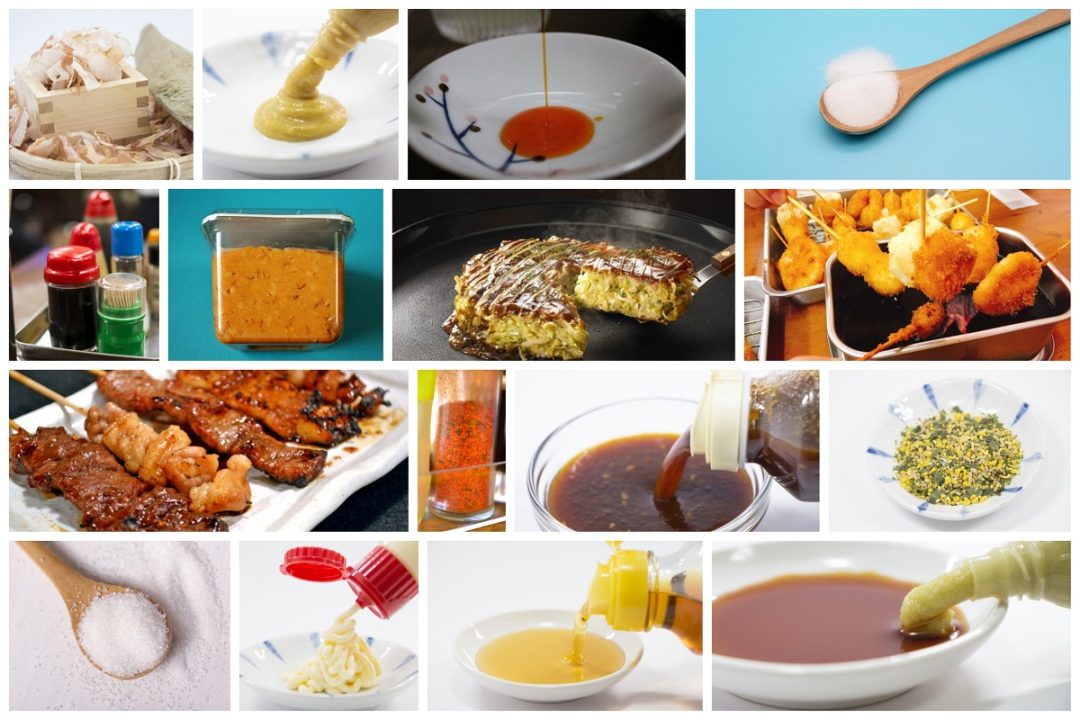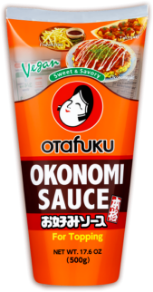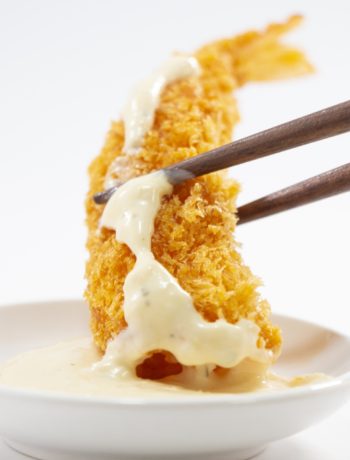Do you know the staple sauces and seasonings used in Japanese homes?
Today, let’s take a look at what kind of sauces and seasonings Japanese people use.
Contents
What is “SaShiSuSeSo” in Japanese Cooking?
First, let’s look at the staples of Japanese cooking.
To remember the 5 main types of seasonings, Japanese people use a trick with their alphabet, called the “SaShiSuSeSo” method.
There’s an old adage in Japan that if you add your seasonings in the correct order, starting with “Sa” and ending with “So”, you will be able to make many delicious dishes, especially stewed types.
So, let’s look at each Japanese seasoning corresponding to Sa, Shi, Su, Se, and So.
Sato “Sa” / Sugar
The first of the basic seasonings in “SaShiSuSeSo” is Sa, for sato, which is sugar.
Sugar sweetens, softens, and adds gloss to the ingredients.
Of the 5 main seasonings, sugar is said to be best when added first, because it needs time to soak into the ingredients.

Shio “Shi” / Salt
The second of the basic seasonings in “SaShiSuSeSo” is Shi for Shio, which means salt.
Salt doesn’t just add saltiness to the ingredients, it reduces excess water, condenses the umami flavor and acts as a preservative.
Typically, salt is added after sugar because it can be absorbed a little easier than sugar.
If salt is added before the sugar, the sweet flavor of the sugar won’t properly soak into the ingredients.

Su “Su” / Vinegar
The third basic seasoning in “SaShiSuSeSo” is Su which means vinegar in Japanese.
Vinegar adds a touch of sour to the ingredients, mellowing the flavors and eliminating any strong odors associated with fish or meat.
If vinegar is used in the early stages of cooking, it will be oxidized and the flavor lost, so it is better to add it near the end of cooking.
There are many types of vinegar, for example grain vinegar and pure rice vinegar, the type of vinegar depends on the raw materials.
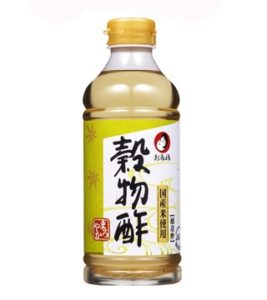
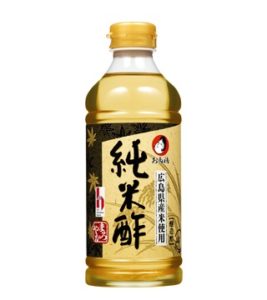
Shoyu “Se” / Soy Sauce
The fourth basic seasoning in “SaShiSuSeSo” is Se, which stands for Shoyu, soy sauce.
Soy sauce is an indispensable seasoning in traditional Japanese food, it adds salty flavor, aroma and umami to the ingredients. The ingredients of soy sauce include soybean, wheat, salt etc., and it is categorized as a fermented seasoning.
As soy sauce loses its flavor and aroma when heated for a long time, it’s best to add it just before the cooking process is finished for better flavor.

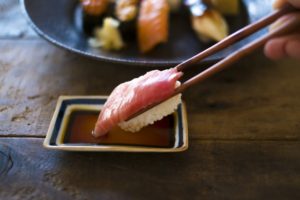
Soy sauce is also used to accompany sushi, a well-known traditional Japanese dish.
Miso “So” / Miso
The fifth basic seasoning in “SaShiSuSeSo” is So, which stands for Miso, fermented soy paste.
Miso also mellows the ingredients and adds a delicious aroma.
Miso is best used near the end of cooking because the aroma will be lost if it is boiled or if it is heated for a long time.
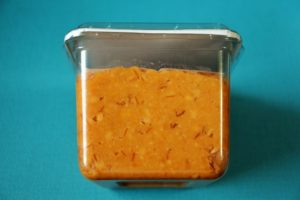
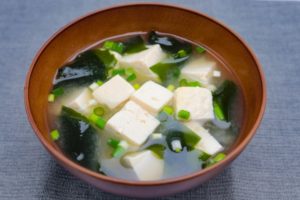
Miso, like soy sauce, is a traditional Japanese seasoning made from fermented soybeans.
Miso-shiru, a traditional soup made with miso, is one of the most adored dishes in Japan.
Ten Kinds of Japanese Sauce
Next, let’s look at Japanese sauces.
There are a great number of Japanese sauces, and many are specifically developed and sold to go with a particular dish.
Today, let’s look at 10 types of sauce that are typically used in Japanese homes.
Worcestershire Sauce
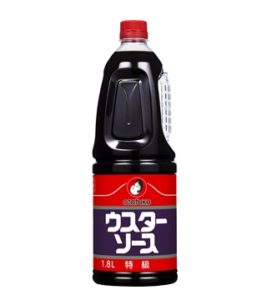
Worcestershire sauce is made by adding spices to a certain mix of fruits and vegetable and then allowing the mix to mature.
In Japan, it is used as a topping for deep fried foods like Tonkatsu (pork cutlet) and croquettes, and as a kind of secret ingredient in stewed dishes.
Worcestershire sauce arrived in Japan more than 100 years ago. Over time, Worcestershire sauce has been “Japanized” and the use of it altered depending on the dish.
Okonomi Sauce
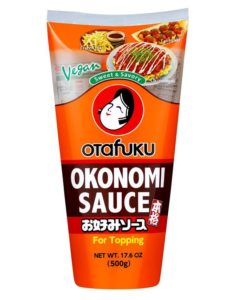

Okonomi Sauce is the signature sauce of Otafuku, the top sauce maker in Japan.
Okonomi Sauce has been refined over the years to be the most perfectly suited sauce for traditional Japanese Okonomiyaki.
The History of Okonomi Sauce
When Worcestershire sauce first came to Japan over 100 years ago, it had a very strong spicy and sour flavor, with many aromatic seasonings.
To the Japanese, who had been accustomed to the flavor of umami in miso, soy sauce, mirin, kelp, bonito, and shiitake mushrooms for a long time, there was something slightly unsatisfactory about it.
So, we thought to add these traditional umami flavors to Worcestershire sauce and make a sauce that would go well with Okonomiyaki (a traditional Japanese dish). In this way Okonomi Sauce was born and in 1952 it was commercialized.
Much loved for its versatility, Okonomi Sauce can be used in many ways, as the main flavoring of a dish, or a secret ingredient to add a little zing.
It can be used as a condiment for hotdogs, or as a sauce to create savory meatballs.


Okonomi Sauce can be purchased online.
Try it now!
Tonkatsu Sauce
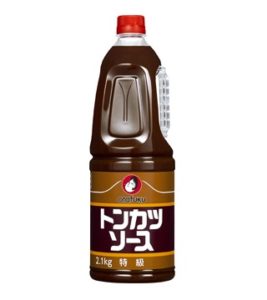
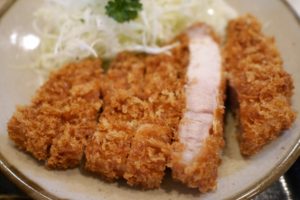
Tonkatsu is a Japanese dish made by taking thick port cutlets, dipping them in a batter of eggs, flour and bread crumbs and deep frying them in oil.
Tonkatsu Sauce, as the name implies, is a sauce to made to go with tonkatsu.
Kushikatsu Sauce

Kushikatsu are servings of meat, seafood, vegetables etc. that are skewered, dipped in batter and deep fried.
They are a popular local specialty in Osaka, Japan.
At Kushikatsu restaurants, kushikatsu are usually eaten after being dipped in kushikatsu sauce set out in a stainless-steel dish, as seen in the photo.
(It is strictly taboo to double dip the kushikatsu back into the sauce dish.)
Yakisoba Sauce
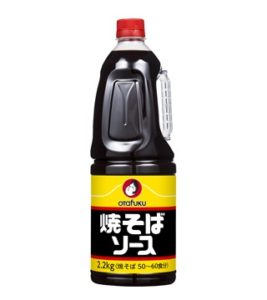
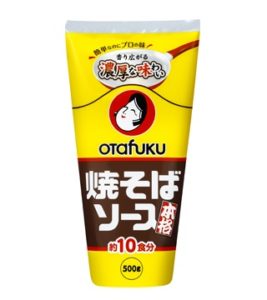
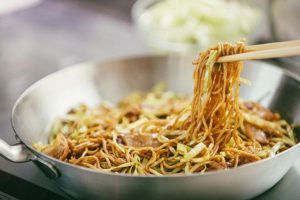
Yakisoba Sauce is especially developed to go with yakisoba.
Yakisoba is made by stir-frying steamed Chinese noodles with meat (usually pork) and vegetables like cabbage, carrots and onions.
There are foods like yakisoba all over the world, but in Japan it means noodles fried in sauce, either Worcestershire sauce or yakisoba sauce.

Yakisoba is often cooked on hot plates at festival stalls, making it a popular dish to eat when attending a festival.
In Japan, specific Yakisoba Sauces are manufactured and sold to make home cooked yakisoba even more delicious.
Yakiniku Sauce
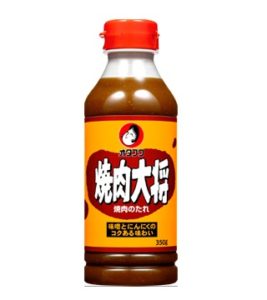

Yakiniku is a kind of meal where bite-sized servings of meat and vegetables are placed on an iron grid over an open flame of charcoal or gas, grilled and then eaten after being dipped in sauce.

The base for BBQ sauce is Worcestershire sauce, but the base for Japanese yakiniku sauce is soy sauce.
Another difference between barbecue and yakiniku is the timing of when you eat it.
In an American style barbecue, large pieces of meat are gilled and cooked, then served and eaten by a group at one time, whereas in Japanese yakiniku, the food is bite-sized, grilled and eaten one by one over the course of the meal.
Gyoza Sauce
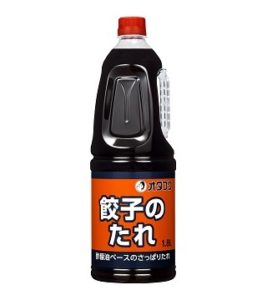
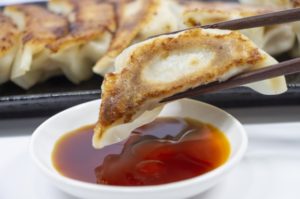
Gyoza is a kind of dumpling (also known as pot-stickers) made of minced meat and vegetables in a thin wrapper made from flour. They can be boiled, steamed, grilled or fried.
In China, where gyoza originate, they are often boiled or steamed, but in Japan they are usually grilled.
The sauce that is then added is generally made by mixing soy sauce, vinegar, and mirin.
However, in Japan, special sauces made just for gyoza are sold in supermarkets.
Teriyaki Sauce
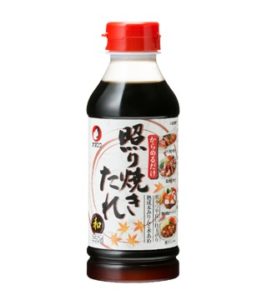

Teriyaki is a cooking method in which soy sauce, mirin, sugar, etc. are mixed and used as a seasoning sauce.
Teriyaki Sauce can be made with the common seasonings found in a Japanese home, but specific teriyaki sauces are also sold in stores.
Yakitori Sauce
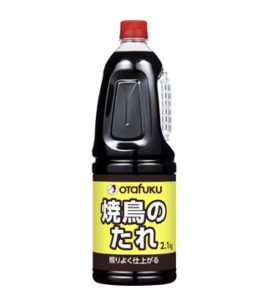
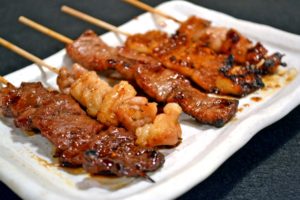
Yakitori are bite-sized pieces of chicken that are skewered and grilled over a charcoal fire.
Yakitori is often served at specialty restaurants, and these have become one of the most popular types of restaurant in Japan.
Yakitori is generally divided into two kinds, yakitori grilled with salt and yakitori grilled with sauce.
The sauce for yakitori grilled with sauce is usually a salty-sweet sauce made up of soy sauce, mirin, sake, sugar, etc.
Sukiyaki Sauce
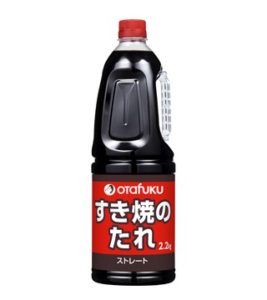
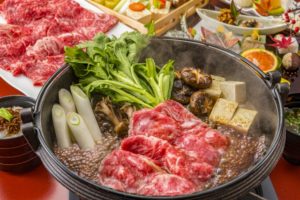
Sukiyaki is when ingredients such as thin sliced meat, green onions, tofu etc. are placed in a shallow pot (nabe) then boiled with a salty-sweet sauce made with soy sauce and sugar. Beef is usually used in sukiyaki and it is commonly eaten after being dipped in raw beaten egg.
In Japan, sukiyaki is a favorite choice for special occasions.
Food manufacturers have also developed and sell special sauces that go well with sukiyaki.
14 Kinds of Japanese Seasonings
Finally, besides Japanese sauces, let’s take a look at some common seasonings found in Japanese homes.
Cooking Sake
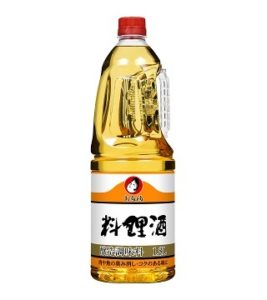
Cooking sake is a kind of sake used exclusively for cooking.
Sake is a traditional Japanese alcohol made from rice, also known as rice wine.
Cooking meat or fish in cooking sake eliminates strong odors and gives the finished dish a richer flavor.
The main difference between sake for drinking and sake for cooking is whether salt has been added or not.
One reason for this is that under tax law, by adding salt to prevent the alcohol from being used as a drink, it can be sold even at stores that don’t have a license to sell alcohol.
Mirin (Sweet Sake)
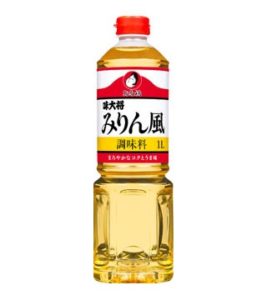
Mirin is a traditional Japanese liquor used to season Japanese foods such as teriyaki or “nimono” (simmered dishes).
It is most commonly used in cooking, but in the past, it was drunk as a sweet liquor.
Similar to hon-mirin (authentic mirin), there are many “mirin-style seasonings” available.
Hon-mirin is manufactured by carefully saccharifying glutinous rice, malted rice, and alcohol over a long period of time.
On the other hand, mirin-style seasonings are manufactured by blending sugars such as glucose and starch syrup with rice, malted rice, umami seasonings and spices over a short period of time.
In addition, while hon-mirin contains about 14% alcohol, the mirin-style seasonings contain almost no alcohol, or the alcohol content will be less than 1%.
Therefore, hon-mirin is subject to liquor tax and can only be purchased at a licensed liquor store, and is therefore more expensive than mirin-style seasonings.
Ponzu
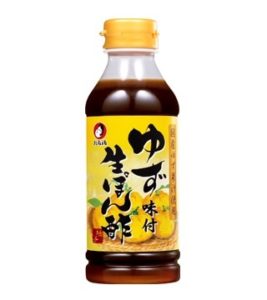
What is called “Ponzu” in Japan really means ponzu soy sauce.
Ponzu soy sauce is made by adding acetic acid and soy sauce to the juice of citrus fruits such as lemon, kabosu, yuzu and so forth.
In Japan it is used as a seasoning for traditional Japanese food, it is also often used as a sauce for hot pot.
Dashi
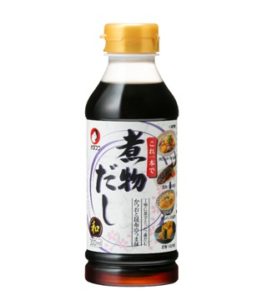
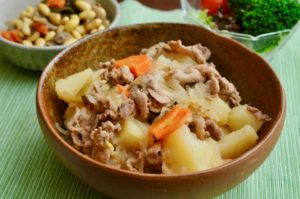
Dashi is traditional Japanese soup stock made by extracting umami flavors from ingredients such as kelp and bonito.
Many people use the powdered or liquid soup stocks types of dashi because making real dashi correctly from bonito or kelp is time consuming.
Dashi is often used when making miso soup, rolled egg omelettes, and nimono (simmered dishes).
Mentsuyu
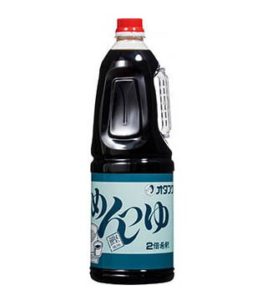
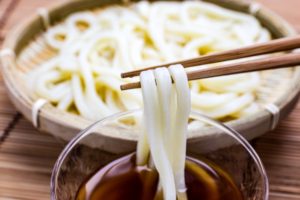
Mentsuyu is a soup base made from soup stock, soy sauce, mirin (or sake), and sugar.
It is often used in noodle dishes, for example soba (buckwheat) noodles, udon or somen noodles.
Mayonnaise

Mayonnaise is in common use in Japan, and traditional Japanese dishes such as Okonomiyaki and Takoyaki are often eaten with mayonnaise.

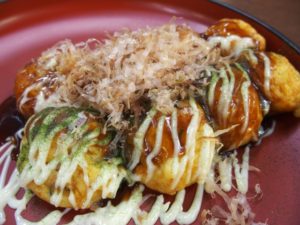
Ketchup
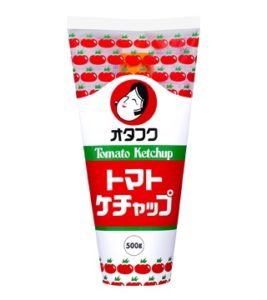
Ketchup is another standard seasoning used in Japan, it is often put on omelettes or omelette rice, used on sausages, or mixed with hamburger “steaks”.
Sesame Oil
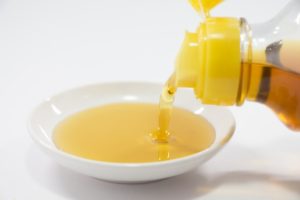
Sesame oil is an edible oil produced by roasting and processing white sesame.
It has a rich and mellow fragrance, and is often used to season and flavor.
Wasabi
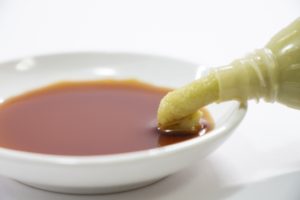
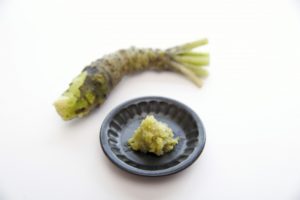
The Wasabi plant is native to Japan, its roots and leaves are edible and have a strong pungent flavor. It is often used as a condiment and seasoning.
Wasabi is an indispensable condiment for traditional Japanese sushi and sashimi.
The tube-type of wasabi is commonly used in Japanese homes.
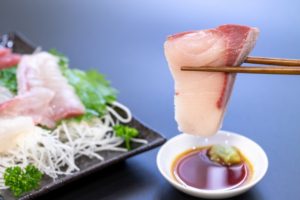
Japanese Mustard
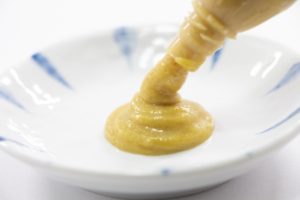
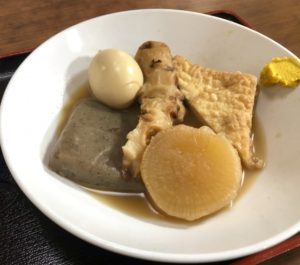
Japanese mustard (wagarashi) is a spice paste made by grinding together mustard powder and mustard seeds and adding water.
The tube-type of this mustard is commonly used in Japanese homes.
It is eaten with traditional Japanese dishes such as “Oden”.
Shichimi
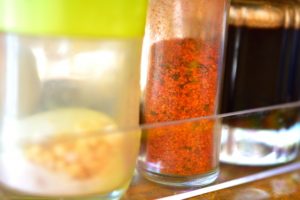
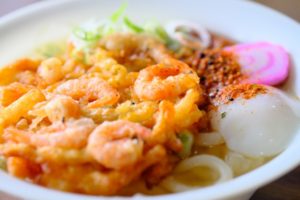
Shichimi, or red pepper with seven kinds of spice, is a seasoning made from multiple spices, such as red pepper, poppy seeds, and hemp seeds.
Shichimi adds not only spiciness but also flavor to a dish.
It is used as a condiment with noodles, such as udon and soba, and also on yakitori.
Chili Oil
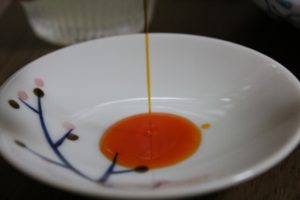
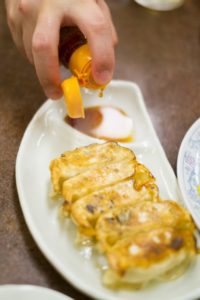
Chili oil is a seasoning made by adding red pepper to sesame oil and adding heat to create a spicy oil.
In Japan, its often used as a seasoning or condiment when eating Chinese food.
It’s also common in Japan to add chili oil to gyoza sauce as a slightly different way to eat gyoza.
Katsuobushi (dried bonito)
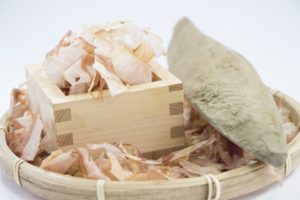
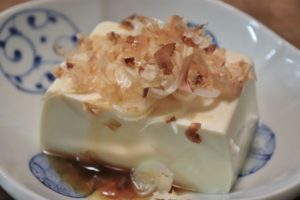
Katsuobushi is a preserved food made by heating small slices of bonito, then allowing them to dry and harden.
The act of shaving the fried bonito is called “kezuri-bushi”. The bonito flakes are then used as a seasoning in Japanese food.
Katsuobushi is used to make soup stock, or eaten on top of tofu with soy sauce.
Furikake (dried food sprinkled over rice)
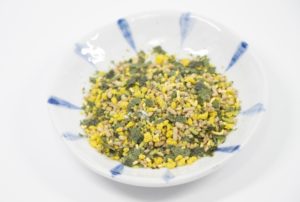
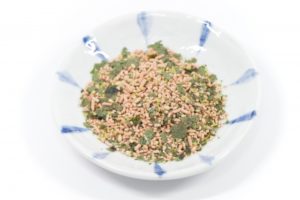
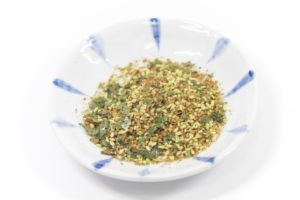
Furikake is a kind of seasoning exclusively made for rice.
“Furikake” means “to sprinkle” in Japanese, and furikake is sprinkled over rice before being eaten. It is usually made from tiny dried pieces of fish or meat.
Furikake can come in all kinds of combinations, including egg flavored, cod roe flavored, wasabi flavored, etc.
Where to buy Japanese sauces and seasonings?
If you want to try Japanese sauces and seasonings, you should look for them in Japanese grocery stores or Asian markets.
You might also be able to buy some of them through online shopping, so please take a look.
Okonomi Sauce can be purchased on this EC website.
Okonomi Sauce is the signature sauce of Otafuku, the top sauce maker in Japan.
Much loved for its versatility, Okonomi Sauce can be used in many ways, as the main flavoring of a dish, or a secret ingredient to add a little zing.
Okonomi Sauce can be purchased on this EC website, why not give it a try!


